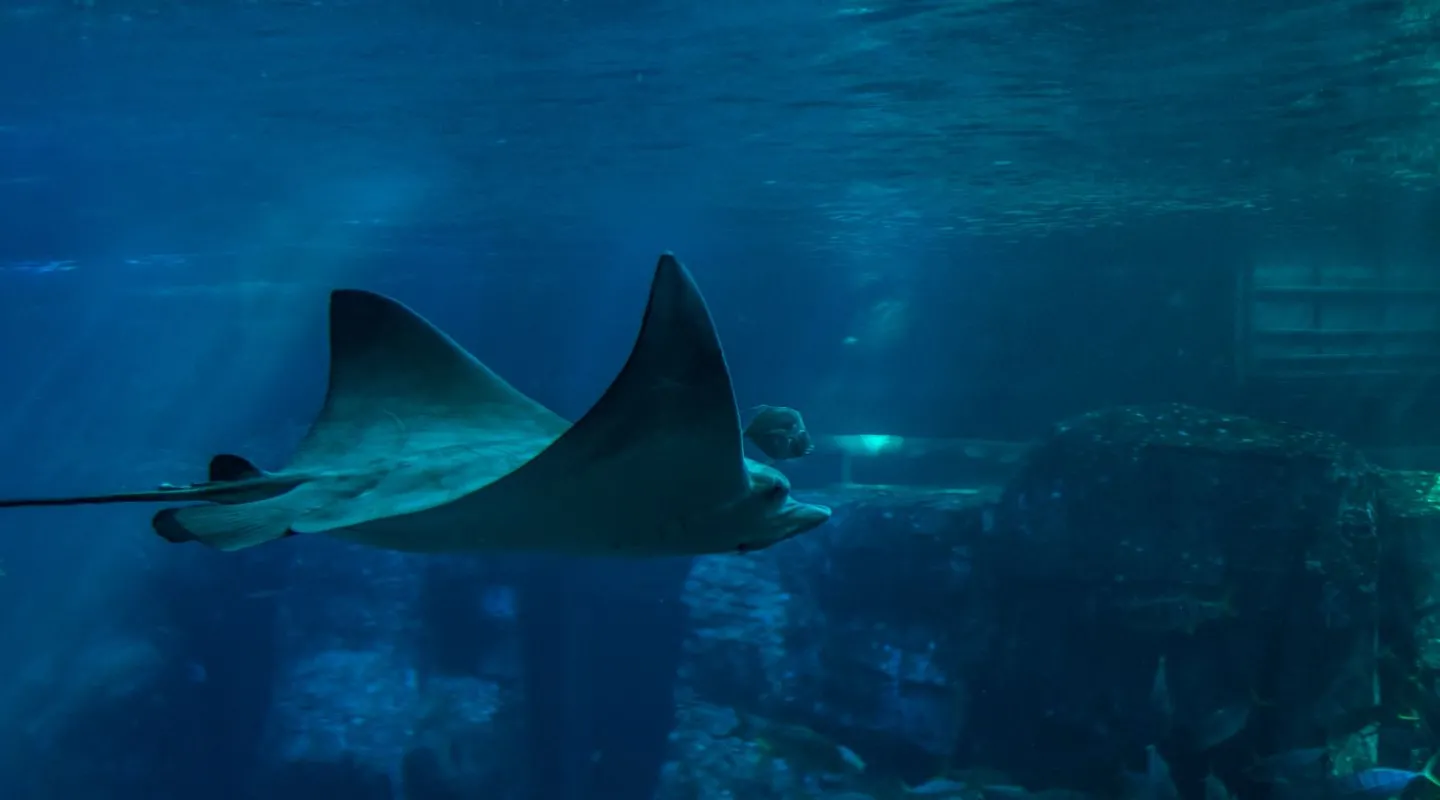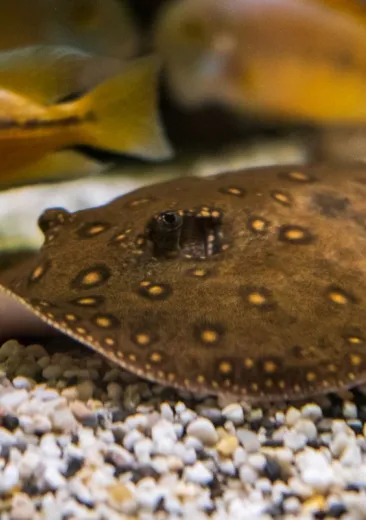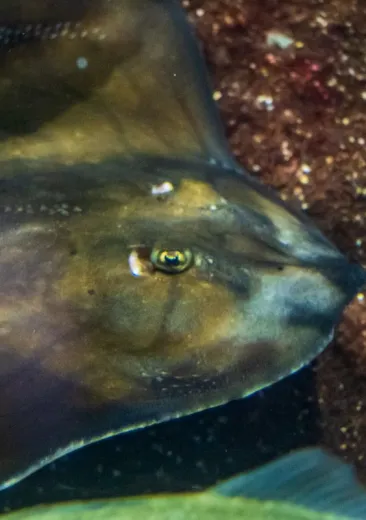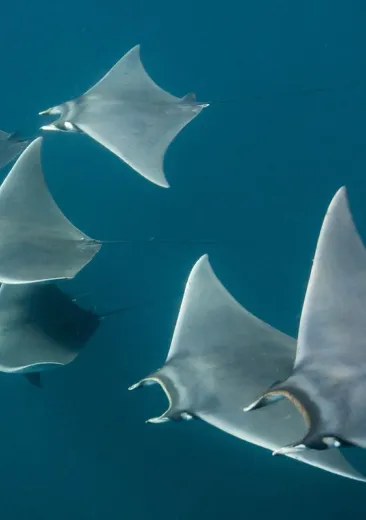The eagle rays - Aetobatus ocellatus presented at NAUSICAA were all born in other partner aquariums, as part of a European conservation programme called ESB-European StudBook. The ESB tracks the genealogy of each animal within a population managed by EAZA member institutions.
In 2021, a new eagle ray from Burgers Zoo in the Netherlands joined the large deep-sea pool, and it was not entirely unknown to Nausicaá. In fact, two eagle rays already in the basin are its offspring!
This ray has already reached adulthood and is 1.60 m long. By comparison, the other eagle rays in the basin are on average 65 cm long.
Where is the animal to be found?
The eagle ray lives between the surface and a depth of 80 m, over sandy areas and reefs. It lives both on the seabed and in the open sea, in coastal waters and estuaries at depths of between 1 and 100 metres, but more generally at depths of 20 to 25 metres.
How can it be recognised?
The eagle ray is characterised by a diamond-shaped body that can exceed 3 m in width. The abdomen is white, while the back varies between grey and brown and is dotted with white spots. The tail is about 2.2 times longer than the width of the animal and has venomous stings on its dorsal fin. It can reach a span of 3 metres and weigh up to 200 kg.
What is distinctive about it?
- This species reaches sexual maturity between 4 and 6 years of age when the eagle ray reaches a span of between 1.1 and 1.3 m - 1.5 m for females. The gestation period is approximately 12 months. The eagle ray is ovoviviparous, (the term aplacental viviparous is now used) i.e. the eggs develop and hatch inside its body.
- It is an iconic animal of the high seas. It displays majestic and impressive ballets. They live in groups of a few individuals to several hundred, and can swim very quickly to escape their predators. It swims by moving its pectoral wings slowly and extensively, which gives the impression of flying rather than swimming.
- It lives in schools of several dozen individuals but sometimes in pairs or even alone.
- The eagle ray feeds on gastropods, molluscs, crustaceans, worms, octopus and fish.
Threat and protective measure
The ocellated eagle ray is hunted for its flesh, its cartilage and its dorsal skin in South-East Asia.
First birth of eagle rays at Nausicaá!
Two little eagle rays, Aetobatus ocellatus, were born at Nausicaá on 10 August 2022. The day before, the oceanographers in charge of the large tank had isolated the pregnant stingray in the auxiliary tank so that it could complete its gestation period in peace.
The babies were not long in coming, as the next morning the keepers were able to discover the two babies. Both were beautiful babies, with a wingspan of 45 cm and a weight of 1.73 kg for one and 47 cm and 1.99 kg for the other.
The gestation period for eagle rays lasts around 12 months and is aplacental viviparous, meaning that the eggs develop and hatch in the female's womb, giving birth to fully formed young.
The two male eagle rays have joined the aquariological reserves so that the keepers can easily follow their growth. As the weeks go by, the keepers will teach the stingrays to come and fetch their food, a way for the keepers to monitor the quantity of food distributed and observe the animal's state of health.
In a few months' time, the eagle rays will be transferred to a partner facility.










